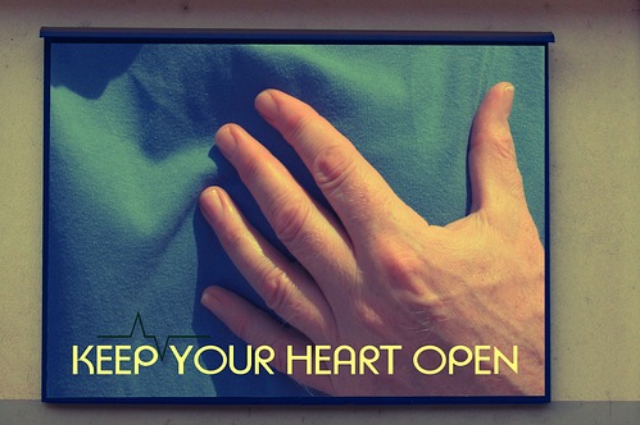
Image by Gerd Altmann from Pixabay
Introduction:-
In the present world, cardiac arrest has become so common. Even it affects the younger generation too. All because of food habits and less physical work. This is a pathetic situation. To save our future generations, we must be aware of food habits. This is going to help those who are affected by any heart problems or prone to have this. Let us see some of the conditions and the recommended diet for that in this article.
Atherosclerosis:-
Atherosclerosis is a condition where the walls of arteries are deposited with something like calcium, and salt, especially triglycerides and cholesterol.
The sequences of atherosclerosis :
Atherosclerosis
Coronary heart disease.
Myocardial infarction.
Angina pectoris.
Atherosclerosis - Here the walls of blood vessels are deposited by cholesterol and triglycerides.
Coronary heart disease - Because of the deposition, the blood flow is restricted. (Coronary arteries fail to supply the blood to the myocardium). This causes blood pressure.
Myocardial infarction - When the blood flow is restricted to a particular tissue, the tissues are damaged. This is called a myocardial infarction.
Angina pectoris - The pain from the damaged tissues, especially from the heart is known as angina pectoris. In this stage, the person should limit the physical exercises.
Symptoms of atherosclerosis :
- Numbness of the upper arms.
- Pain in the upper arms.
- Fatigue
- Numbness and cramps in the buttocks is the predominant symptom.
Causes :
Normally, for any life-threatening disease, the reasons are 4 S. They are,
- Salt
- Sugar
- Spices
- Saturated fats.
Here in atherosclerosis, high amounts of sugar and high amounts of saturated fats are the main reasons.
Obesity and less physical work are the other reasons.
Diet for cardiac diseases :
Before planning the menu these three points should be considered in mind.
- Maximum rest for the heart.
- Prevention and elimination of edema.
- Maintenance of good nutrition.
The nutrients for humans are,
- Carbohydrates and Energy
- Proteins.
- Fats.
- Vitamins
- Minerals.
Carbohydrates and energy :
Carbohydrates:
Obesity must be restricted and metabolism must be reduced. So cereal starch alone must be taken, that too the whole grains.
For example, bajra, oats, and parboiled rice are the best.
Energy:
Energy must be reduced. Because high energy induces high metabolism. High metabolism increases the heart rate. If the energy is less, and metabolism is less there will be a drop in blood pressure. So cardiac efficiency is improved.
So usually 1000 to 1200 calories are enough per day.
Sugar :
Sugar must be reduced, for the following reasons.
- They promote triglyceride production in the liver and intestines. (Triglycerides are the forms of fats that circulate in the blood) .
- They also promote the production of VLDL. (Very Low-Density Lipoproteins) .
- Large amounts of sugar stimulate the production of insulin. Insulin is lipogenic and can produce fats.
Proteins:
The normal allowances are recommended in proteins. But animal proteins must be restricted. ( Meat, milk, and ghee).
Pulses and buttermilk can be allowed. Skimmed milk can be given.
TOFU, A FERMENTED SOYA FOOD IS BEST FOR ARTERIES. IT CONTAINS ZERO CHOLESTEROL.
Fats :
Cholesterol and triglycerides are the main forms of fats carried in the bloodstream. This cholesterol and triglycerides come partly from food, and partly from production from the liver.
Cholesterol - animal fats, oil, milk, egg yolk, liver, kidney, ghee.
Triglycerides - Sugar, honey, sugar products.
So all the above must be avoided.
The normal cholesterol level. - 240mg/dl.
The normal serum triglycerides - 50 -200mg/dl.
Vitamins :
Generally, there may be vitamin deficiency since a lot of food( meat, egg yolk, butter) is restricted.
Vitamin A - To supply vitamin A papaya is a good resource. Because it also helps to reduce cholesterol. Fish is a good source of Vitamin A and it eliminates bad cholesterol too.
In the B- Complex vitamins, Niacin (vitamin B3) is essential because it helps remove the plaques from the arteries. Fish is a good source of niacin.
In the C vitamin, pineapple is good and it also reduces cholesterol.
Minerals :
Hypertension is an associated symptom of cardiac disease. So to avoid hypertension, sodium must be restricted.
So for them, green leafy vegetables, carrots, salted pickles, and papads must be avoided.
(Carrots and green leafy vegetables are a rich source of vitamin A. So vitamin A supplements are needed for them).
High fiber diet :
High fiber helps to reduce cholesterol levels and obesity.
Apple and guava are best, because
- Pectin present in them lowers the serum cholesterol.
- They enhance the excretion of fecal steroids. (This is fats in the motion and this condition is called Steatorrhea)
Other fibrous foods are cluster beans, legumes, vegetables, and fruits. ( Green leafy vegetables must be avoided) .
Hypocholesterolemic agents:
The food which decreases the cholesterol level in the blood is called hypocholesterolemic agents. They are fenugreek seeds, cluster beans seeds, garlic, fish oil, sesame seed, horse gram, etc. Other points to be considered in atherosclerosis patients :
- Small quantities of food at frequent intervals are very important. Because heavy meal increases the cardiac output volume.
- Soft, bland, easily digested food which requires less chewing must be given.
- Liquids alone are given for 3 days.
- But very hot and cold beverages must be avoided.
- Because very hot or very cold may induce arrhythmias
- Coffee is also avoided. Since they are stimulants, they stimulate the heartbeat. (arrhythmias - uneven heartbeat) .
- Constipation must be avoided. So vegetable soup and fruit juices must be given at room temperature.
- Sodium, Sugar and saturated fats must be restricted. So, avoid, pickles, papad, carrots, green leafy vegetables, Bakery foods, chips, cheeses, egg yolk, knol-khol
(They all have 100mg of sodium/100g). - Beetroot, beef, Bengal gram dhal, and red gram dhal must be restricted.
What are n3 fatty acids? Or omega-3 fatty acids?
They are the essential fatty acids called linolenic acids. They can reduce the cholesterol level in the blood.
Fish, groundnut, and sesame seeds are some examples.
Substitution for an atherosclerosis patient:
Instead of this, Go for this:
- Rice. Wheat, Ragi
- Parathas. Phulkhas.
- Dosa. Idli, Idiappam.
- Potato chips, papad. Grilled papad.
- Whole milk. Skimmed milk
- Lassi. Buttermilk
- Omelette. Poached egg.
- Palak paneer. Greens, dhals.
- Fruit Juices, milk. Raw fruits.
